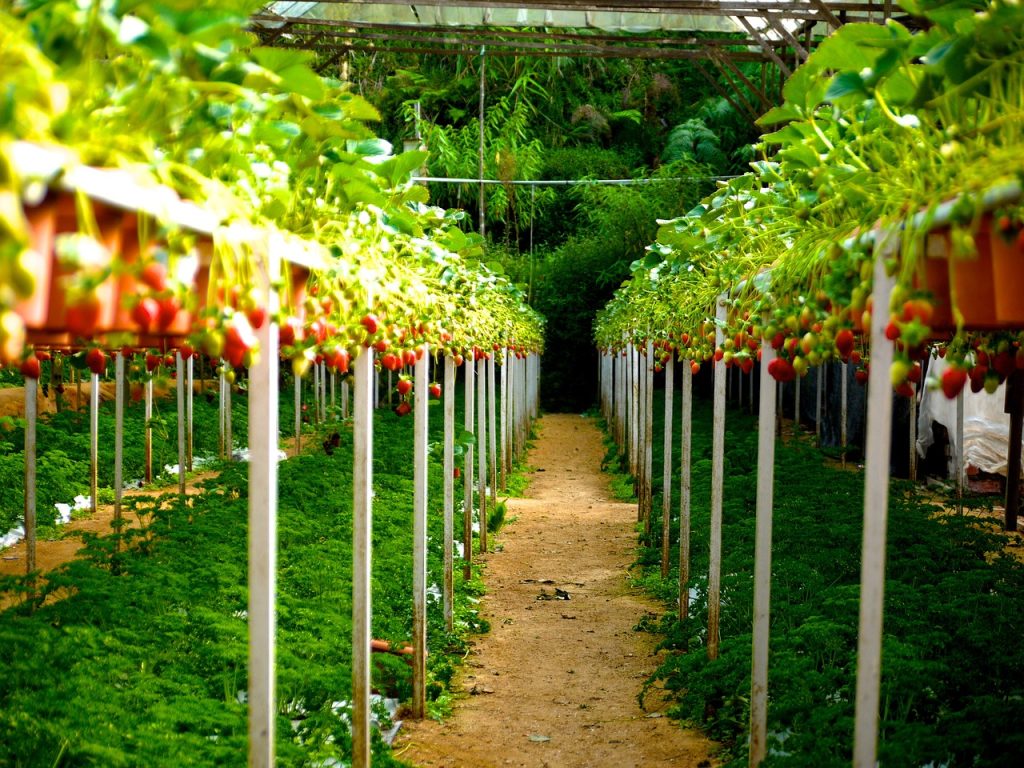
Introduction:
In a world dominated by supermarkets stocked with produce from all corners of the globe, the concept of seasonal eating might seem like a quaint notion of the past. However, there’s more to this age-old practice than nostalgia. Seasonal eating not only connects us with nature’s rhythms but also offers a myriad of health and environmental benefits. In this blog, we’ll delve into the fascinating world of seasonal eating and explore the best foods for each season.

Spring: Nature’s Rejuvenation
Spring brings a burst of colors and flavors to our plates as the world awakens from winter’s slumber. Embrace the bounty of the season with an array of vibrant greens, tender asparagus, and juicy strawberries. Leafy greens like spinach and kale are packed with vitamins and minerals, promoting detoxification and renewal after the winter months. Asparagus is not only a rich source of fiber but also provides essential nutrients like folate and vitamins A and C. Strawberries, with their antioxidant properties, make for a deliciously sweet and nutritious treat.

Summer: Sun-Kissed Delights
Summer, with its long, warm days, ushers in a cornucopia of sun-ripened fruits and vegetables. Indulge in the succulence of tomatoes, peaches, watermelons, and bell peppers. Tomatoes, whether enjoyed fresh or as a base for sauces, are brimming with lycopene, known for its cancer-fighting properties. Peaches and watermelons are perfect for the hot summer days as they are not only refreshing but also hydrating. Bell peppers, available in a spectrum of colors, provide a hefty dose of vitamins A and C.

Fall: Harvest Abundance
As the leaves change color and the air turns crisp, fall heralds the arrival of an abundant harvest. Fill your plate with the earthy goodness of pumpkins, apples, sweet potatoes, and Brussels sprouts. Pumpkins, rich in beta-carotene and fiber, can promote eye health and digestion, they are not just for carving . Apples, a versatile fruit, are a good source of antioxidants and fiber. Sweet potatoes, with their vibrant orange hue, are packed with vitamins and minerals. Brussels sprouts, when roasted or sautéed, become a delectable side dish, offering a wealth of nutrients.
Winter: Nourishing Comfort
Winter invites us to savor hearty and warming foods that provide comfort during the colder months. Root vegetables like carrots, parsnips, and turnips are staples in winter kitchens. Carrots are rich in beta-carotene and contribute to immune support and eye health. Parsnips, with their sweet and earthy flavor, are a good source of fiber and vitamin C. Turnips, when roasted or added to stews, offer a unique taste along with vitamins K and C. Additionally, citrus fruits like oranges and grapefruits are winter gems, delivering a burst of vitamin C to ward off winter blues.
Benefits of Seasonal Eating:
- Nutrient Density: Seasonal fruits and vegetables are harvested at their peak, ensuring maximum nutrient density. Eating foods in their prime season allows us to benefit from their optimal nutritional content.
- Supports Local Agriculture: Choosing seasonal produce supports local farmers and reduces the carbon footprint associated with transporting food over long distances. This, in turn, helps sustain local economies.
- Environmental Impact: By reducing the need for artificial growing conditions and excessive use of pesticides, seasonal eating promotes environmental sustainability. Eating in harmony with the seasons aligns with the natural growth cycles of plants.
- Variety and Taste: Seasonal eating encourages a diverse and varied diet. Consuming a range of fruits and vegetables throughout the year not only ensures a broad spectrum of nutrients but also keeps meals exciting and flavorful.
- Cost-Effective: As it is abundant and readily available, seasonal produce is often more affordable because. This makes it an economical choice for those looking to eat healthily on a budget.
Conclusion:
Seasonal eating is a practice that not only nourishes our bodies but also connects us to the rhythm of the natural world. Embracing the best foods for each season allows us to enjoy a diverse and flavorful diet while reaping the nutritional benefits of fresh, locally sourced produce. As we navigate the aisles of supermarkets, let’s not forget the wisdom of choosing foods that align with the seasons – a simple yet profound way to enhance our well-being and contribute to a more sustainable future.







